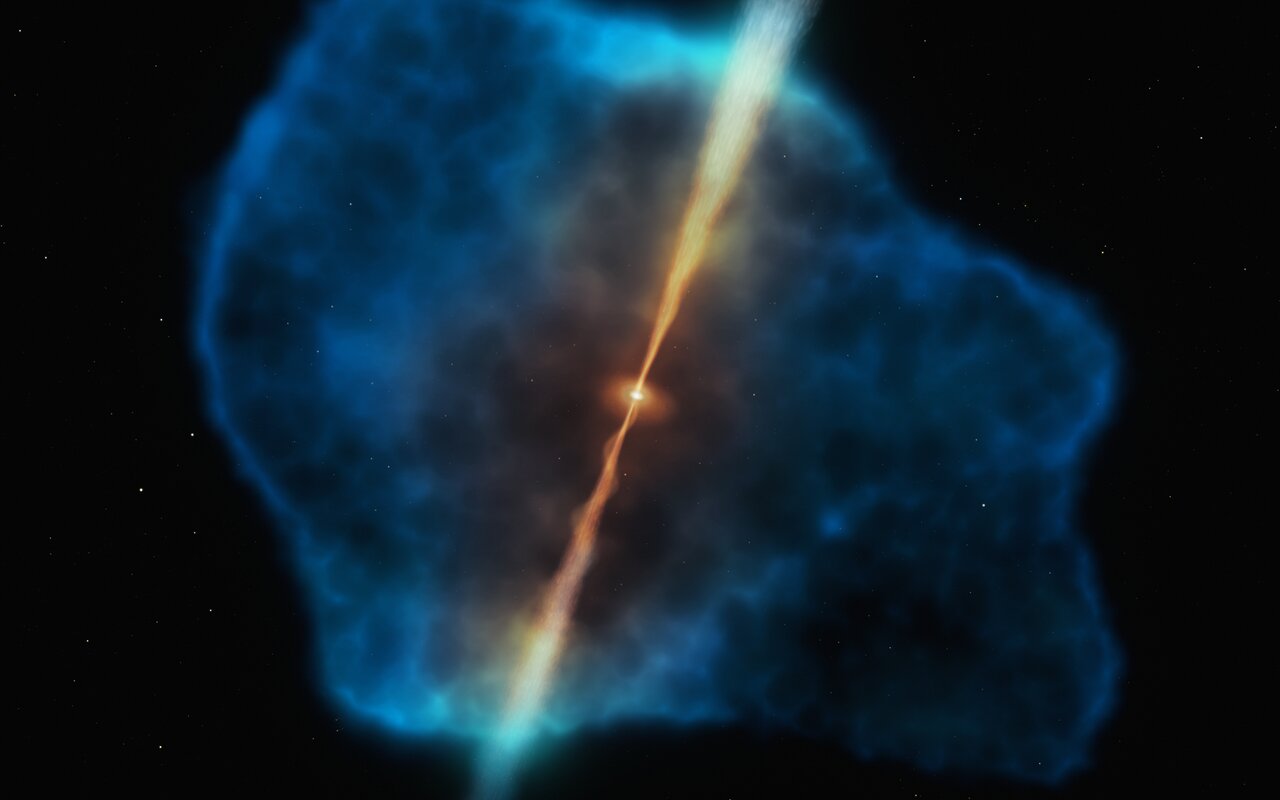Supermassive black holes are just a little bit too supermassive – astronomers have difficulty explaining how they got so big so quickly in the early universe. So maybe it’s time for a new idea: perhaps giant black holes formed directly from dark matter.
The biggest black holes in the universe are frighteningly big, topping out at over a hundred billion times more massive than the sun. To make things even more frightening, we see these kinds of monsters very early in the history of the universe, when our cosmos was only 800 million years old.
This presents a bit of a challenge, since the only way we know how to make black holes is for giant stars to die. Then, those small black holes (usually only a few times more massive than the sun) need to grow, either by feeding on surrounding material or merging with other black holes.
That’s fine, but for the supermassive black holes to appear so early, it means that these processes have to go unnervingly fast after the formation of the first stars – perhaps too fast.
But what the early universe lacked in stars it more than made up for in dark matter, the mysterious substance that makes up 85% of all the mass in the universe.
It’s possible, according to new research led by Carlos R. Argüelles at the Universidad Nacional de La Plata and ICRANet, that dark matter itself grew dense enough to collapse directly into black holes in the early universe, skipping the usual star-based story.
According to Argüelles, “This new formation scenario may offer a natural explanation for how supermassive black holes formed in the early Universe, without requiring prior star formation or needing to invoke seed black holes with unrealistic accretion rates.”
As a further consequence of this model, the smallest galaxies wouldn’t have giant black holes. Instead, they would just have ultra-dense cores of dark matter.
“Here we’ve proven for the first time that such core–halo dark matter distributions can indeed form in a cosmological framework, and remain stable for the lifetime of the Universe,” added Argüelles.


Notably though that model is on fermionic dark matter, not the cold dark matter that fits observation best.